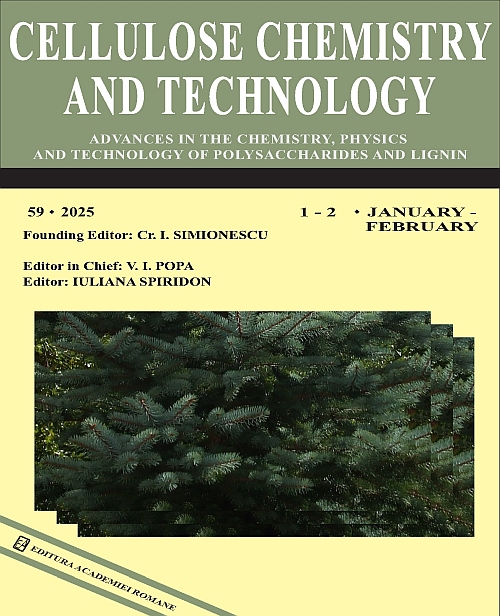|
Title
A comparative study on physico-chemical characteristics of scoured and bleached hemp fabric through SEM, FTIR and XRD
Authors
RASHI KUSHWAHA, PRIYANKA KESARWANI and ANJU KUSHWAHA
Received
May 2, 2024
Published
Volume 59 Issue 1-2 January-February
Keywords
bleaching, cellulosic material, hemp fabric, pre-treatment, scouring
Abstract
Hemp (Cannabis sativa L.) is an annual plant and one of the most widely used crops cultivated for obtaining long and
strong bast fibers. The resulting fibers contain cellulose, hemicelluloses, lignin, and other impurities. The presence of
lignin and impurities makes the hemp fibers stiffer and brittle. These disadvantages challenge the direct application of
fabric in the apparel industry. Therefore, a pretreatment is important for tuning the properties of hemp fabric for
successful use in the apparel industry. The aim of this study has been to examine the effect of scouring and bleaching
on the surface morphology, chemical structure, and crystallinity of the hemp fabrics by using instrumental techniques,
such as SEM, FTIR, and XRD. SEM analysis of the samples showed slight changes in the properties of scoured, and
scoured and bleached hemp fabric. The surface of the scoured fibers became smooth due to removal of non-cellulosic
material (lignin, hemicelluloses and wax) and the thickness of the fiber slightly increased. Further, after bleaching, the
surface of the fibres became very rough and the thickness of the fiber was reduced. FTIR analysis showed that the
absorbance peak of -OH stretching decreased after the bleaching process. XRD analysis showed a slight increase in
crystallinity index (%) of scoured, and scoured and bleached fabrics due to the removal of non-cellulosic materials after
chemical treatments.
Link
https://doi.org/10.35812/CelluloseChemTechnol.2025.59.16
|



